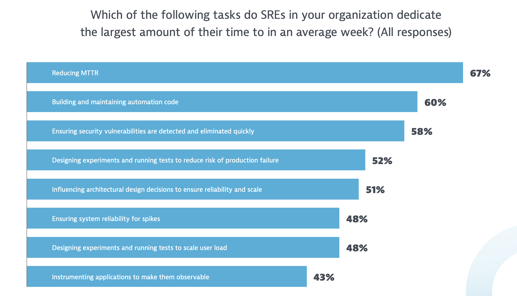How To Slash Your Mean Time To Recover with Auto-Remediation
/4.png?width=200&name=4.png)
Site Reliability Engineers (SREs) are spending 67% of their time on reducing Mean Time to Recover (MTTR), according to a recent report by monitoring tool provider Dynatrace.
Gartner state that 75% of organisations will be using SRE organisation-wide by 2025. And as SRE becomes more strategically important and reliability leaps up the leadership agenda, SREs need to be able to shift-left and start embedding reliability into services at the architectural stage.
Auto-remediation is the ability to use advanced automation to sense issues, effect solutions and restore service; reducing TOIL and enabling SREs to shift-left.

Source: Dynatrace, State of SRE Report 2022.
Incident Timeline
The below image contrasts incident timelines with simple monitoring tools in place vs tools which can support auto-remediation and self-healing.
As you can see, auto-remediation reduces the MTTR by 96%.

Auto-remediation and toil reduction from Cloudsoft AMP
In complex IT environments, failure is to be expected.
Cloudsoft AMP gets you back up and running with minimal downtime.
What SRE teams need is a solution that can reduce toil, promote continuous resilience, and deliver scalable, resilient and performant applications. Cloudsoft AMP delivers this through auto-remediation, enabling your critical systems to self-heal in seconds.
AMP uses autonomic computing principles to sense issues, automatically effect policies which resolve those issues and restore service.
AMP reduced downtime for a Tier 1 Bank by 95%, and enables the team to have 100% hands off management of their applications in any environment.

